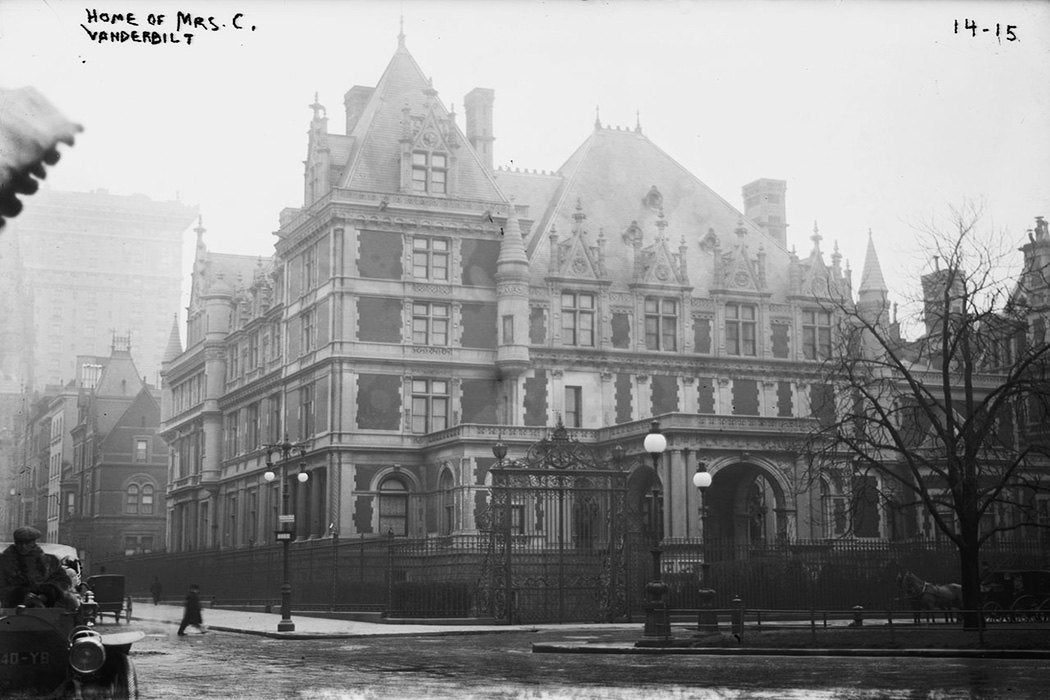The New York Times recently reported that there are more $100 million-plus homes on the global market than ever before—and the majority of the very priciest ones are in the US. The most expensive listing in the world is a $500 million compound being built in Bel Air that will have a 30-car garage and a “Monaco-style casino.”
Homes like these are less private refuges than showpieces designed for lavish parties. We can trace the interest in ostentatious houses among the American super-elite to late-nineteenth-century New York City.
In a 2005 paper, Molly W. Berger begins her story in 1883, when the Vanderbilt family celebrated the inauguration of a new mansion on Fifth Avenue by inviting 1200 people to a “great fancy dress ball.” Alice Vanderbilt arrived dressed as “the Electric Light” in a diamond-encrusted headdress and battery-powered light, and the decorations included life-size hobby horses that workmen had spent months creating.
Berger writes that the Gilded Age mansions were remarkably public places. Newspapers breathlessly followed their construction and the social lives that happened within them. People walking down Fifth Avenue could gawk at servants in livery below festive awnings. Another Vanderbilt mansion of the same era included two art galleries that opened to the public once a week.
Citing geographer David Harvey, Berger writes that public attention to the lives and indulgences of industrialists like the Vanderbilts fueled consumerism, building a market for the new products industrial capitalism was turning out.
In fact, the mansions were closely related to another kind of opulent housing that was available to a much larger part of the public: luxury hotels. The most iconic of these was the Waldorf-Astoria, which towered above most other city buildings of its day at 16 stories.
The Waldorf part of the hotel opened with a charity ball that brought more than 1500 wealthy guests to the “Marie Antoinette drawing room”—a replication of the queen’s Versailles apartments. But the hotel drew other visitors too. Its prime events room featured glass walls, and oglers gathered each night to watch the revelers. A reporter at the time wrote that “it was perfectly fair to affirm that nearly every adult resident of Manhattan, male or female, excluding the laboring and poorer classes, visited the Waldorf once a week.”
And yet even just mixing middle and upper classes caused anxiety. A New York Times account of an orchestra concert held at the Waldorf complained that some women in the audience wore street dresses, which “struck a jarring note, greatly marred the beauty of the scene, and entirely destroyed the desired and hoped-for idea of a brilliant social assemblage.”
Still, Berger writes, the geography of opulent buildings made the social hierarchy clear. At the same time, it let the middle class enjoy a taste of a super-wealthy lifestyle. Like then, now we can at the very least read about the mansions of the wealthy in the New York Times.







